It is not easy cycling in the rain and requires knowing how to protect yourself and your bike. Here, we are going to look at what you need to be able to cope with these weather conditions in order to enjoy cycling all year round.
Rainwear for Cycling
As with any outdoor activity, the regulation of your body temperature is fundamental and, this is best achieved with a layering system. Here, we are going to look at the different types of shell layers and how well they protect against the rain.
The essential requirement for the shell or outer layer is that it is waterproof or water resistant. Waterproofing capacity is measured using the hydrostatic head (HH), which is calculated by pressing a column of water against the fabric. The height of the column is increased until the water passes through the fabric. The hydrostatic head you need will depend on the weather conditions and length of time you are exposed to rainfall. We recommend choosing a minimum hydrostatic head of 5,000mm for light rain. The chart below can be used as a reference to help you make the right choice.
Another very important factor to take into account when choosing your rain-wear is breathability. This refers to the fabric's capacity to expel water vapour, which is usually produced by sweat.
Waterproofing and breathability seem to contradict each other, but modern membranes and technical fabrics have managed to combine the two properties in a single fabric, although this comes at a price premium. A cheap plastic rain jacket may be good for a one-off, short downpour, but for intense aerobic activity and long exposure to rain it will be almost impossible to maintain body temperature, due to the build up of sweat. At the other extreme, we find the mythical and pioneering Gore Tex®, which offers a hydrostatic head of almost 30,000 mm. And the highest level of breathability achieved in a waterproof garment.
Tip: Carry a base layer top and dry gloves, protected in a waterproof bag in your rucksack or tool bag. No matter how much you protect yourself, it's only a matter of time before you get wet, if the rain is heavy or lasts for hours, and a dry T-shirt and gloves can save you from hypothermia and allow you to finish your route.
Try to find a balance between waterproofing capacity, breathability and your budget depending on the activity you have in mind.
For the lower torso and legs, bib shorts with hydrophobic treatment anda waterproof membrane in the most exposed areas, such as the lower back and knees, are best. For extreme conditions or long hours of exposure waterproof trousers worn over the bib shorts, such as the Endura Hummvee Waterproof pant, are more suitable.
 Image: Gore Wear with Fabian Cancellara
Image: Gore Wear with Fabian CancellaraThe same approach applies to gloves, which also feature different levels of breathability and waterproofing capacity. However, for long cycling routes in the rain, only neoprene gloves are able to guarantee an acceptable comfort temperature, although neoprene is not breathable, which is why it is only recommended for these extreme conditions.
 Image: Castelli Diluvio neoprene gloves
Image: Castelli Diluvio neoprene glovesTip: It is useful to pack a pair of plastic gloves, like those used at a petrol station, in your emergency kit, along with your tools and spares. In extreme cases and in the absence of other means, if you put them under wet gloves, they will insulate you from moisture. Your hand will sweat, but they will maintain the temperature more successfully than with wet gloves alone.
The options for keeping your feet warm and dry, include specific boots with technical membranes, waterproof socks and overshoes with different levels of thermal protection and waterproofing capacity, depending on the temperature.
 Image: Castelli Diluvio 2 Road overshoes
Image: Castelli Diluvio 2 Road overshoesTip: Seal where the cleats are attached to the sole of the shoes, because this is an easy entry point for water. You can do this from the inside, by putting duct tape under the insole, covering the open area of the cleats, or sealing holes on the outside with silicone.
One last tip for choosing your clothing: pay extra attention to the visibility of your garments, as this is greatly reduced in rainy weather, especially if you plan to ride on busy roads.
For more information on how to choose the right clothing, check out the video on ”How to Choose Rainwear for Cycling”.
Glasses and Helmets
In rainy weather you can use a waterproof helmet cover for protection and, although specific covers are required for some models, others, such as the Velotoze, feature a latex cover that is compatible with most helmets. It is also quick and easy to use and takes up very little space when not in use. An under-helmet with a technical membrane is especially useful if temperatures are low.
 Image: Velotoze helmet cover
Image: Velotoze helmet coverGlasses should not be forgotten, as they protect your eyes from mud and water spray, which can make riding uncomfortable and dangerous. It is common for many cyclists to take them off because they fog up or the lenses get wet, impeding vision, but there are a few tips to minimise these inconveniences.
To prevent fogging, use glasses that do not have a tight, wrap-around fit and, if possible, with anti-fog treatment and vent openings. An anti-fogging spray is a very effective solution for all types of glasses.
Visors considerably reduce raindrops reaching your glasses, so this is highly recommended. If you have removed the visor from your helmet, reattach it when it rains. Or, if you don't have a visor, you can wear a cycling cap with a visor under the helmet.
As for the type of lenses, photochromic lenses adapt to changing light conditions and are the perfect choice for outings when the weather conditions are uncertain. However, if it is clear that the entire ride will be overcast and in low light conditions, clear lenses with UV protection are the ideal choice.
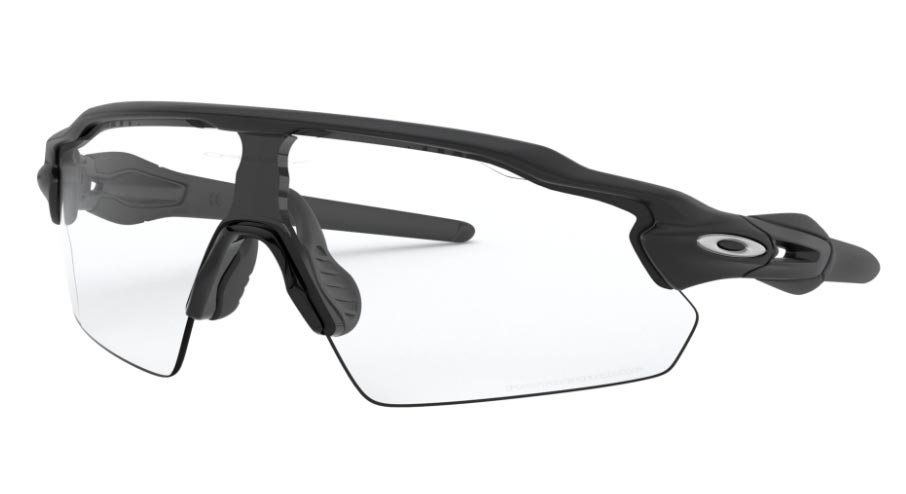 Image: Oakley Radar Ev Pitch
Image: Oakley Radar Ev PitchRain Accessories
Apart from clothing and personal equipment, there are other accessories designed to make riding in the rain easier. Here are a few of the most important.
Mudguard
This is an essential accessory for riding in rainy weather and available for all types of bikes. It is indisputable for urban use and although road and MTB cyclists are often less keen on mudguards, the difference is abysmal and highly recommended for non-competition riding. Mudguards protect against dirt and water spray from the wheels, which is often heavier than the rain itself.
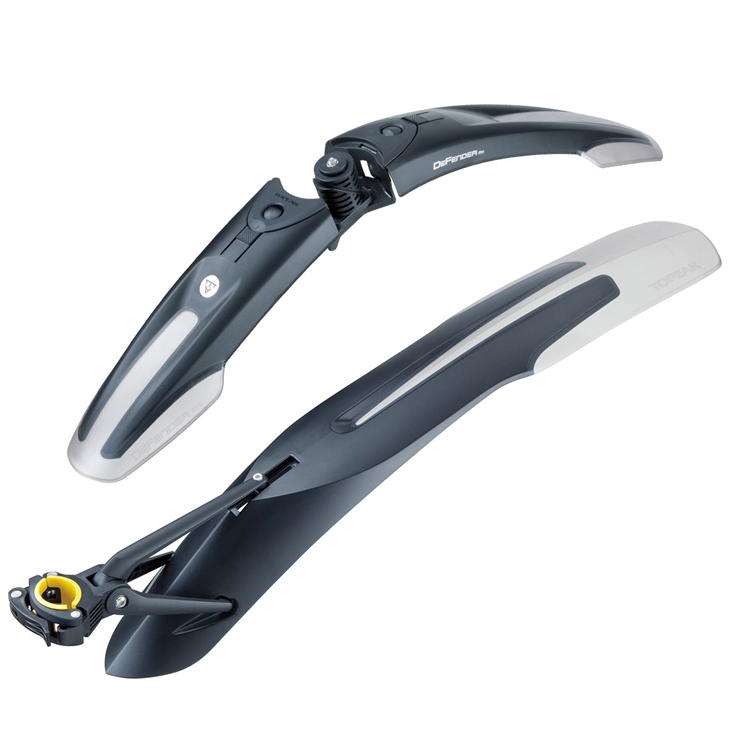 Imagen: Topeak Defender mudguard
Imagen: Topeak Defender mudguardLights
As we mentioned above, visibility is reduced considerably in the rain, so lights should be used even during the day, especially for urban and road use. In this article we explain How to choose cycling lights.
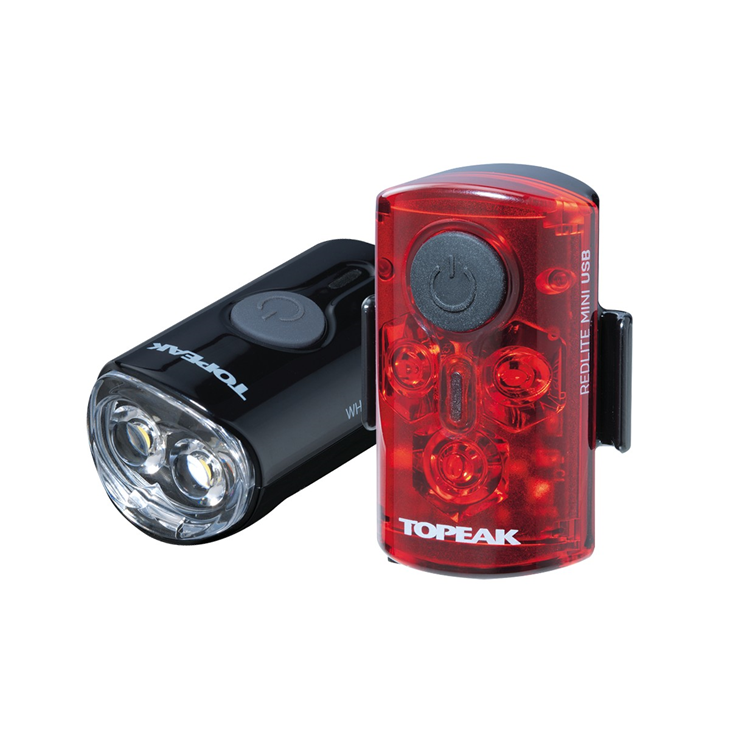 Image: Topeak Mini USB Combo
Image: Topeak Mini USB ComboBags and Rain-covers
There is a wide range of rain-covers, panniers and waterproof bags to protect everything you carry on your rides, especially for urban use, which is where the most delicate items such as computers, documents, change of clothes, etc. are usually carried.
Mechanics and Cyling in the Rain
The bike also suffers, particularly from water and mud, and it is advisable to take a few special measures regarding mechanics and maintenance:
- Lubricate the chain well with specific oil for wet conditions.
- Clean and dry the bike thoroughly when you get home, especially the drivetrain, and lubricate again to prevent rust.
- Check frequently if the brakes and transmission are worn.
- Fit special tyres for wet terrain, whether it is for MTB, road or urban use.
- Lower the usual tyre pressure by about 10% to improve grip, whatever the tyre you use.
- Mount specific mud tyres on your MTB. This element will be the main protagonist of your ride but they are only for mud.
And you also need to take extra precautions when riding a bike in wet weather:
- Increase the safety distance with other cyclists and vehicles.
- Reduce your speed on bends.
- Brake gently and anticipate when you need to brake to compensate for the greater distance needed and lack of grip.
- Try not to apply the brakes when cycling over painted road signs: lines, zebra crossings, stops, give way, etc. They are extremely slippery when wet, especially if coated with oil.
- Avoid large puddles, in case they hide surprises such as potholes, cracks, mud baths or are deeper than expected, and, if you have to pass over them, do so slowly so that you have more room to react and avoid a fall.
- Avoid oil stains due to possible skidding and splashing oil on your bike, which would affect the brakes.
By following these tips, it will be much easier to continue cycling even in rainy weather. You will find all of the above products and professional advice at our Mammoth stores and at https://www.mammothbikes.com.
Related articles and videos


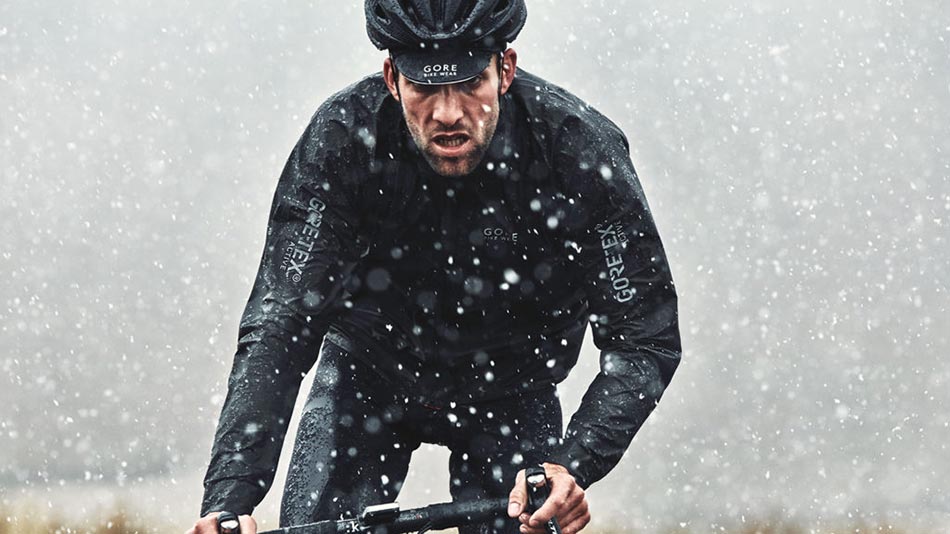

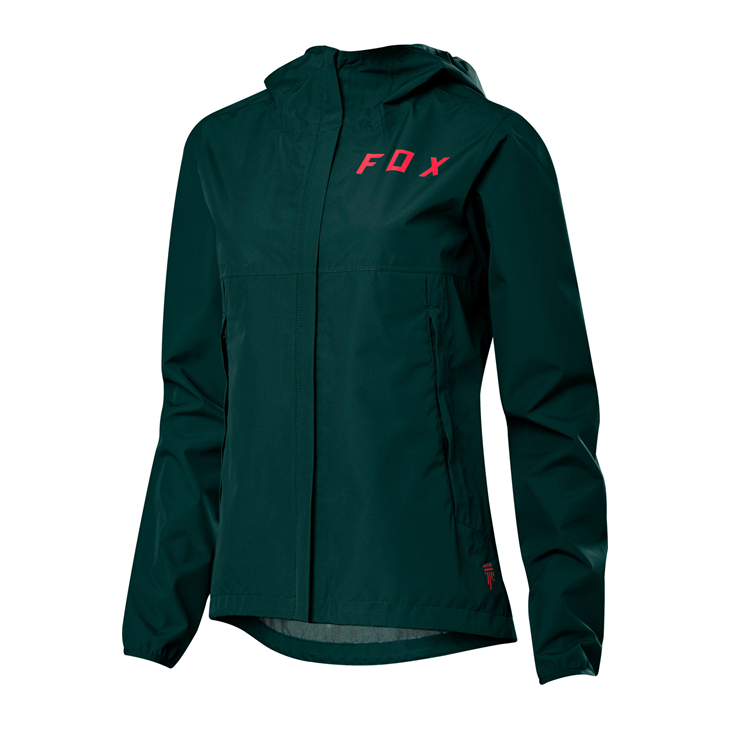
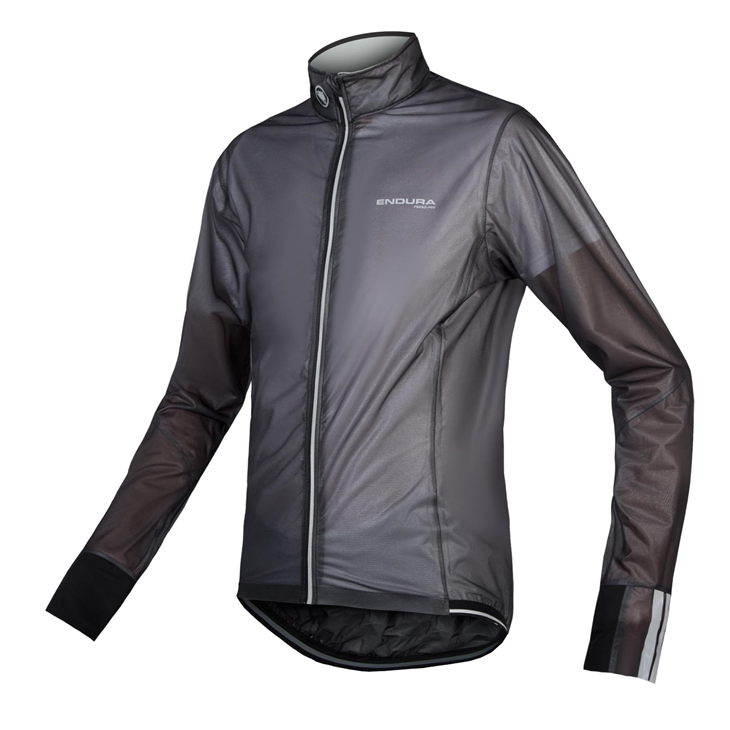
 Image: Gore Wear with Fabian Cancellara
Image: Gore Wear with Fabian Cancellara
 Image: Castelli Diluvio neoprene gloves
Image: Castelli Diluvio neoprene gloves
 Image: Castelli Diluvio 2 Road overshoes
Image: Castelli Diluvio 2 Road overshoes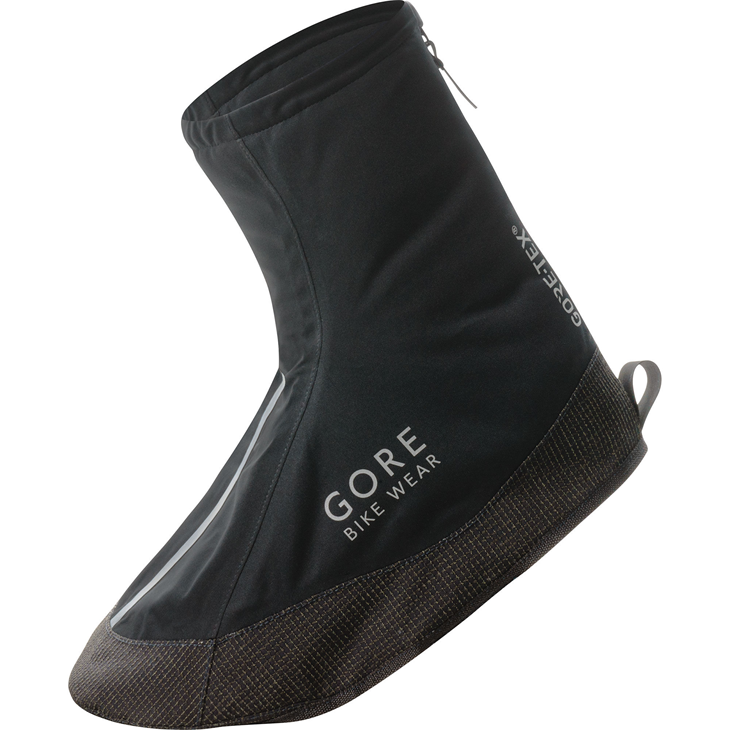

 Image: Velotoze helmet cover
Image: Velotoze helmet cover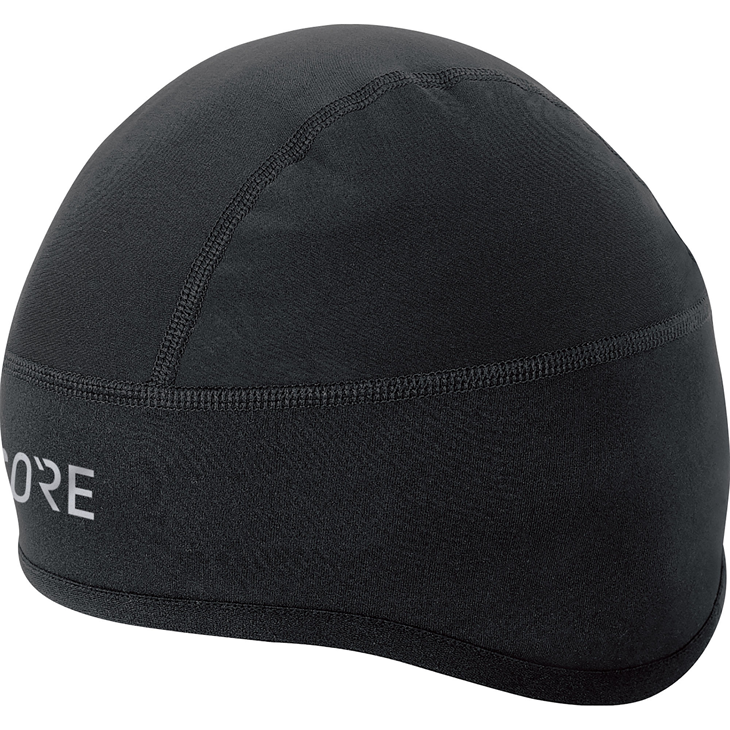
 Image: Oakley Radar Ev Pitch
Image: Oakley Radar Ev Pitch
 Imagen: Topeak Defender mudguard
Imagen: Topeak Defender mudguard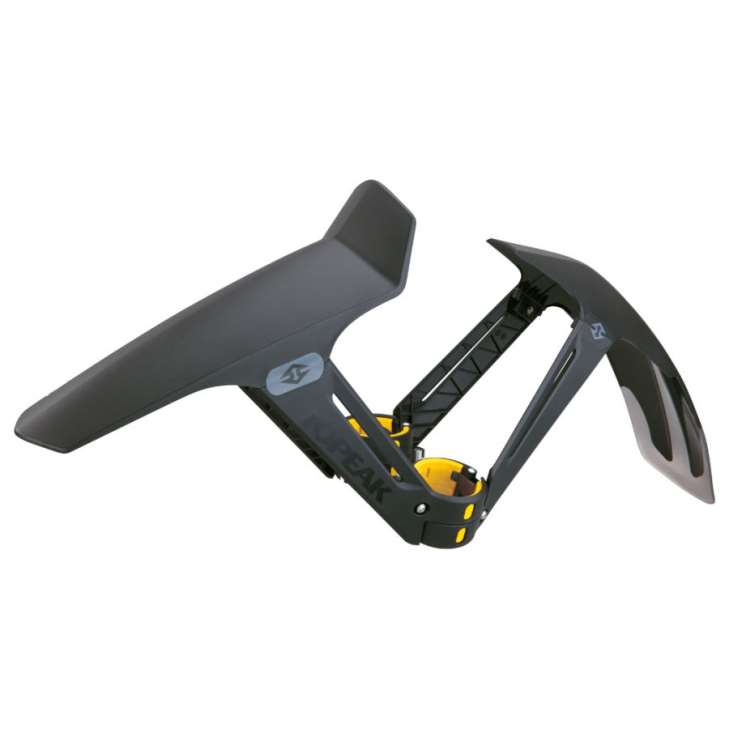
 Image: Topeak Mini USB Combo
Image: Topeak Mini USB Combo
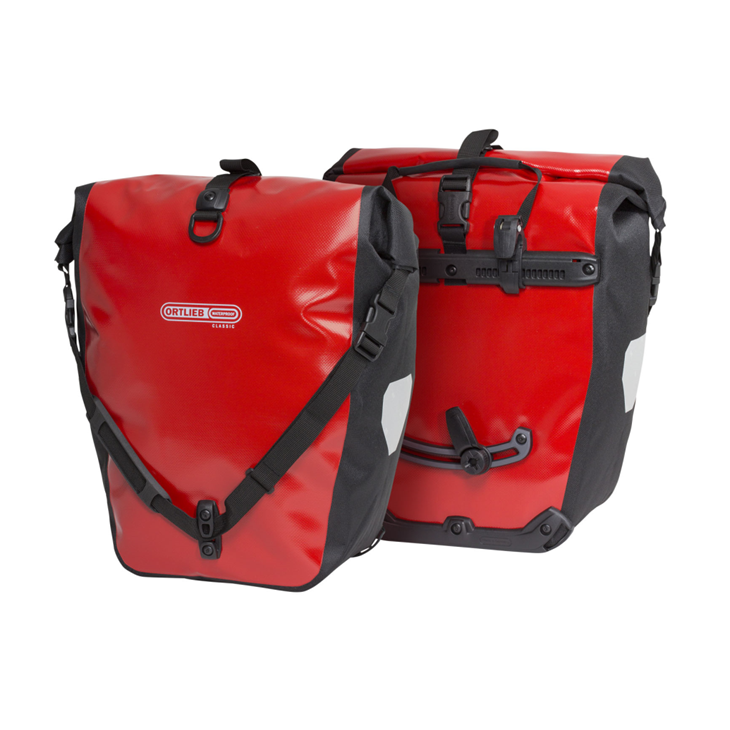


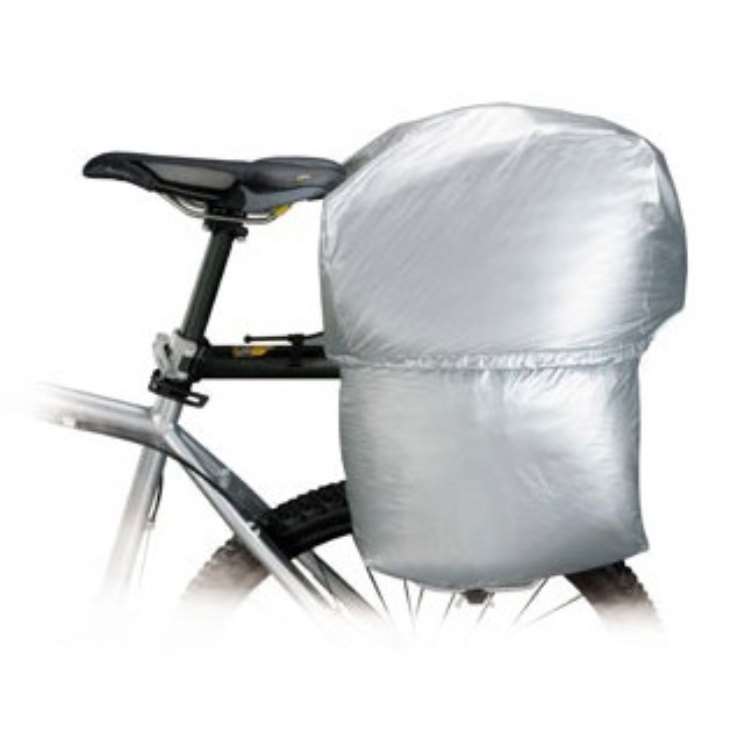
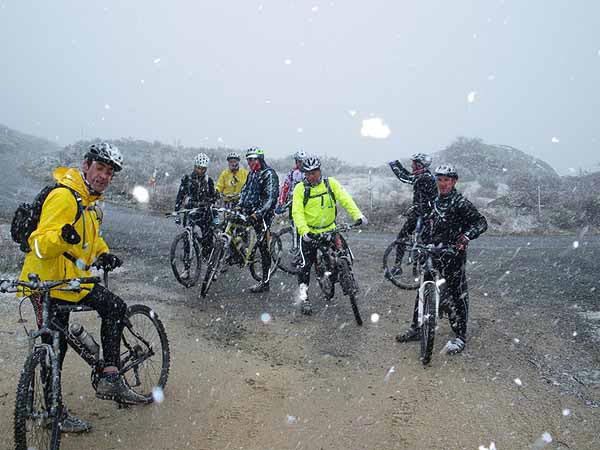
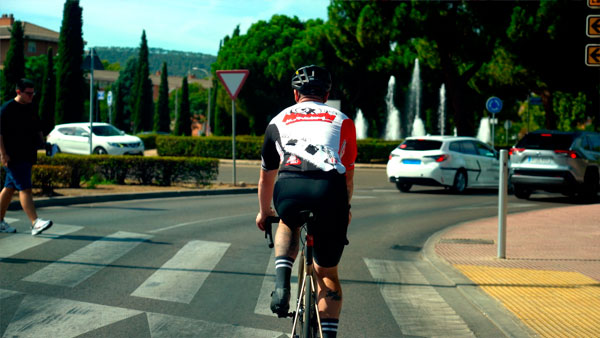

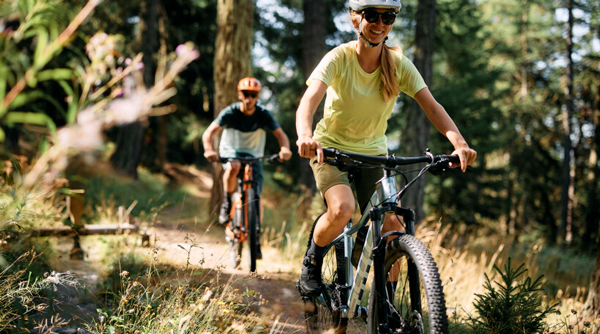

Leave a comment
Be the first to comment on this article.